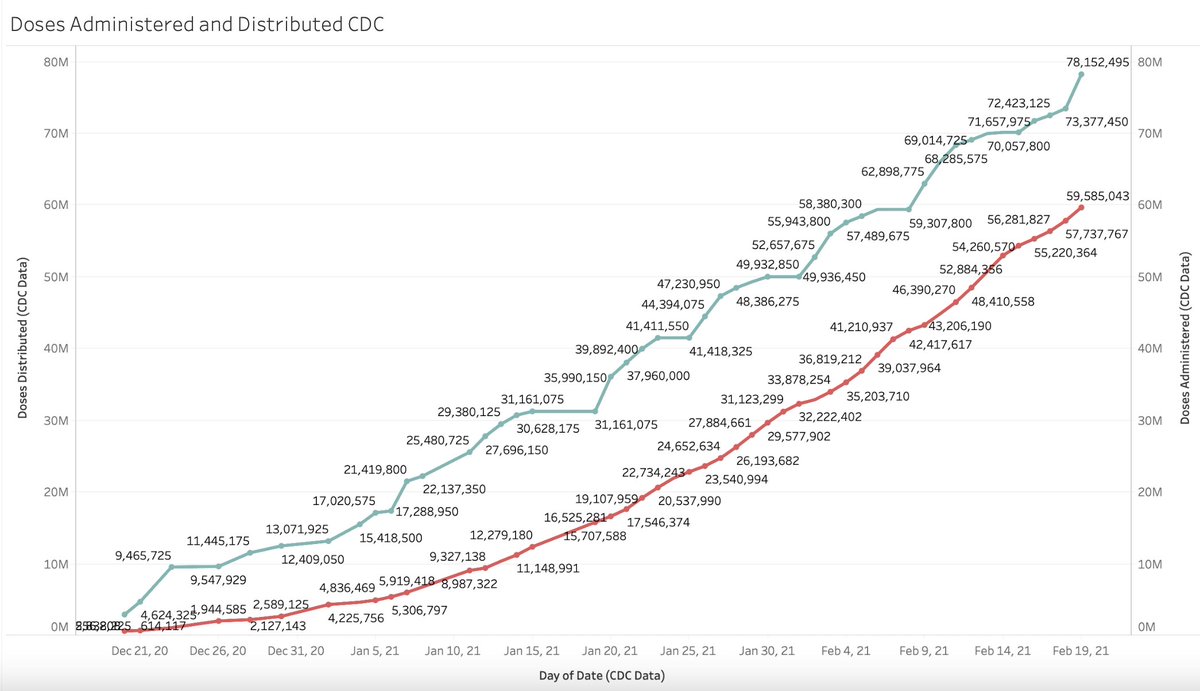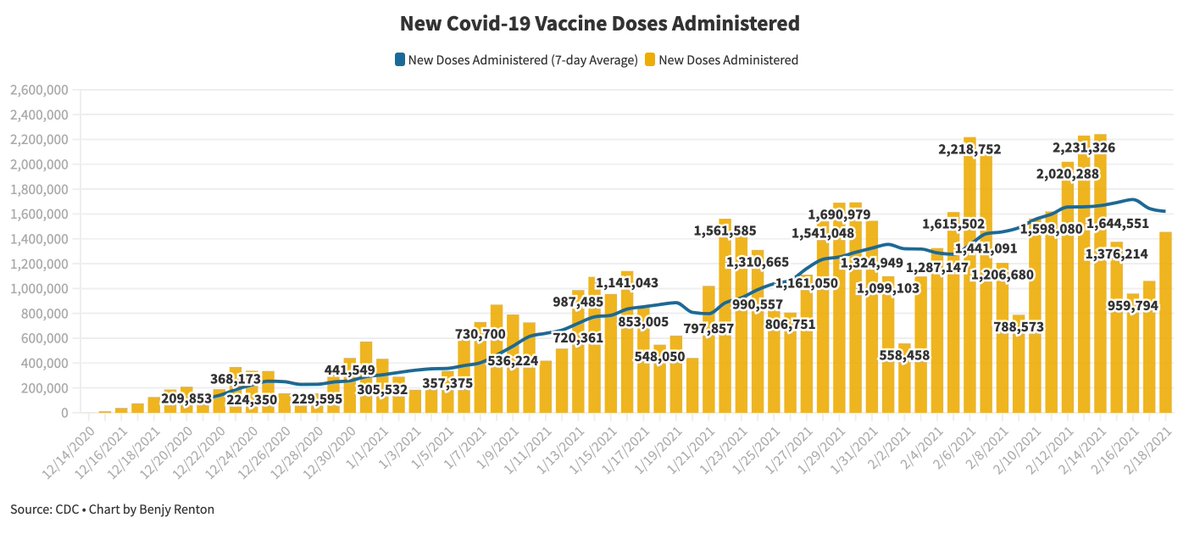
Vaccine data reporting 101:
The CDC pulls numbers from state immunization sites every morning at 6 a.m. (the daily cutoff). It spends the morning verifying these numbers and publishes a public update by 8 p.m. (usually some time in the afternoon).
The CDC pulls numbers from state immunization sites every morning at 6 a.m. (the daily cutoff). It spends the morning verifying these numbers and publishes a public update by 8 p.m. (usually some time in the afternoon).
Today, the CDC reported 2,977,732 doses by the 6 a.m. cutoff (a record regardless) and then had a delay in data syncing, resulting in 4,575,496 new doses administered that were reported. This means tomorrow's numbers will be slightly lower than usual.
As per usual, doses are reported two ways: by the day they are reported (right) and the day they are actually administered (left). The graph on the left is backfilled each day as states report more doses. However, we often use the graph on the right for daily vaccinations. 

Could this increase be a result of state backlogs? Sure, it's possible, especially in large states. However, they only play quite a small role in today's large number.
Key points, regardless of this anomaly:
- Today was a huge day for vaccinations
- 7-day average is increasing
Key points, regardless of this anomaly:
- Today was a huge day for vaccinations
- 7-day average is increasing
Thank you to @cyrusshahpar46 and the data scientists at the CDC for keeping us updated.
• • •
Missing some Tweet in this thread? You can try to
force a refresh












